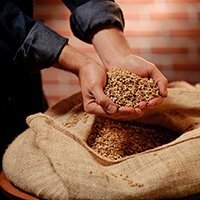Created in 19th-century England, Mild Ale was brewed with pale malts that yielded a lighter color than Porter or Brown Ale, similar to English Bitter and Pale Ale. Distinct from the term “mild,” which described all freshly brewed, un-aged beers, Mild Ale was originally stronger in alcohol than it is today; upwards of 6 percent and higher, as breweries often brewed two or three versions with the increasing strengths designated by the letters X, XX and XXX. Compared to the era’s Pale Ales, Mild Ale was stronger in ABV but more lightly hopped.
English Dark Mild Ale was a creation of World War I, when the beer’s color darkened and alcohol content fell. Brewers added dark sugar or caramel, and some used dark malts, while gravity was limited by laws, taxes and other wartime restrictions. Gravity increased after the war, but dropped again during WWII. Mild Ale subsequently lost popularity in England except for the northwest and West Midlands regions. Few examples are exported to the United States, but several American craft brewers offer an interpretation of English Dark Mild Ale, a flavorful, easy-drinking, moderate-alcohol brew. Expect copper to dark brown hues, unperceived or mild hop character and malty aromas and flavors including sweet caramel, chocolate, molasses, toffee, coffee, nut, licorice, roast and dark fruit.
Characteristics: Malty, caramel, fruity, light- to medium-bodied
ABV range: 3-4.5% IBU: 10-25
Popular English Dark Mild Ale-style beers: Newcastle Brown Ale, Samuel Smith’s Nut Brown Ale, Wychwood Hobgoblin, Abita Turbodog, Lost Coast Downtown Brown, SweetWater Georgia Brown, Tommyknocker Maple Nut Brown, RJ Rockers Bald Eagle Brown, Bell’s Best Brown Ale, Legend Brown Ale Serving Temperature: Cool, 46-54°
Cheese Pairing Ideas: Asiago, Cheshire, Colby, Emmental, Gloucester, Gouda, Gruyère
Food Pairing Ideas: Beef stew, grilled and roast meats, pork and sausage



